
|
FEATool Multiphysics
v1.17.5
Finite Element Analysis Toolbox
|

|
FEATool Multiphysics
v1.17.5
Finite Element Analysis Toolbox
|
Stationary and incompressible laminar Poiseuille flow in a two- dimensional rectangular channel. With a constant inflow profile u(0,y) = Umax and fixed no-slip walls, a fully developed laminar parabolic profile, u(y,L) = Umax4/h2y(h-y) is expected to develop at the outflow.
This model is available as an automated tutorial by selecting Model Examples and Tutorials... > Fluid Dynamics > Laminar Channel Flow from the File menu. Or alternatively, follow the step-by-step instructions below. Note that the CFDTool interface differ slightly from the FEATool Multiphysics instructions described in the following.
Select the Navier-Stokes Equations physics mode from the Select Physics drop-down menu. (Note that for CFDTool the physics selection is done in the Equation settings dialog box.)
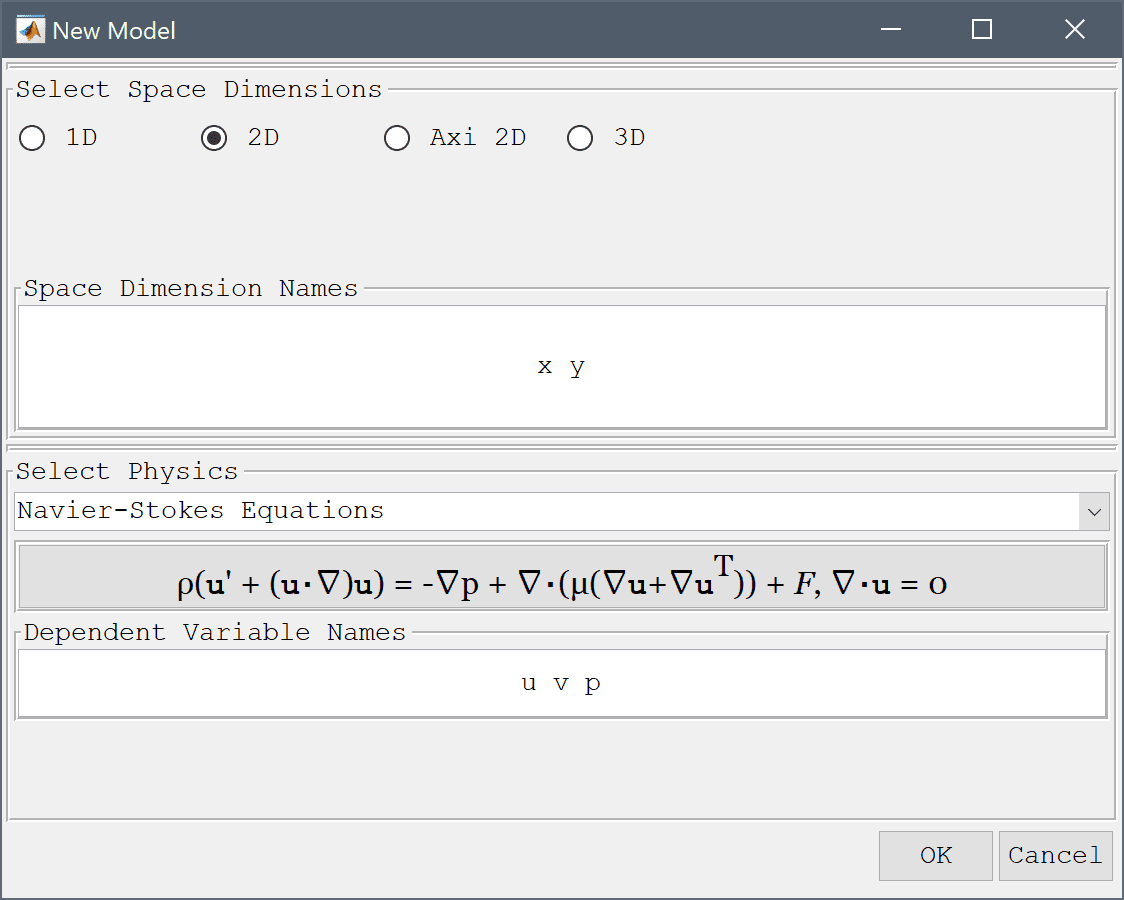
0 into the xmin edit field.2.5 into the xmax edit field.0 into the ymin edit field.0.5 into the ymax edit field.Press OK to finish and close the dialog box.
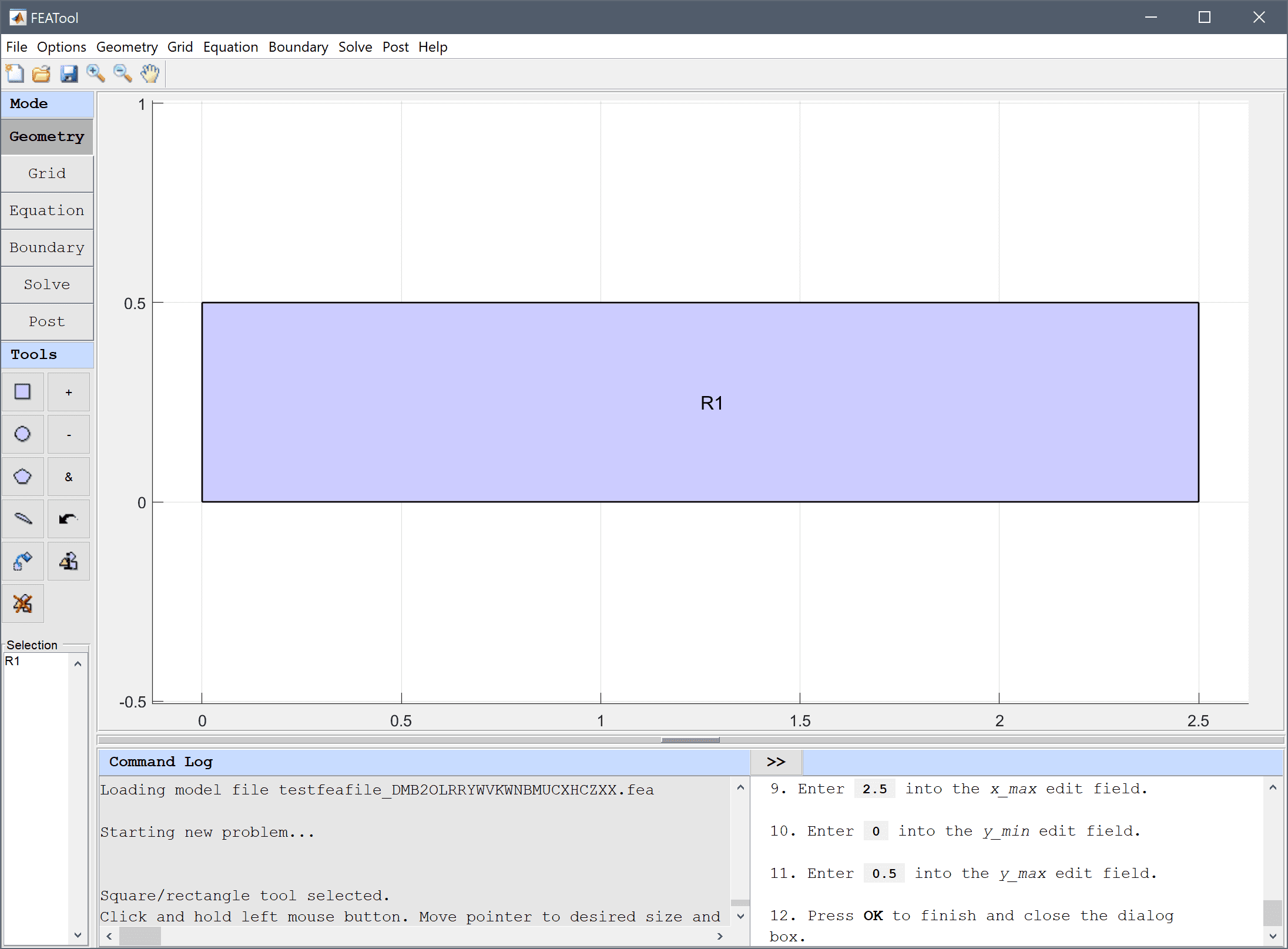
The default grid may be too coarse to ensure an accurate solution. Decrease the grid size to generate a finer grid that better can resolve the curved boundary.
0.04 into the Grid Size edit field.Press the Generate button to call the automatic grid generation algorithm.
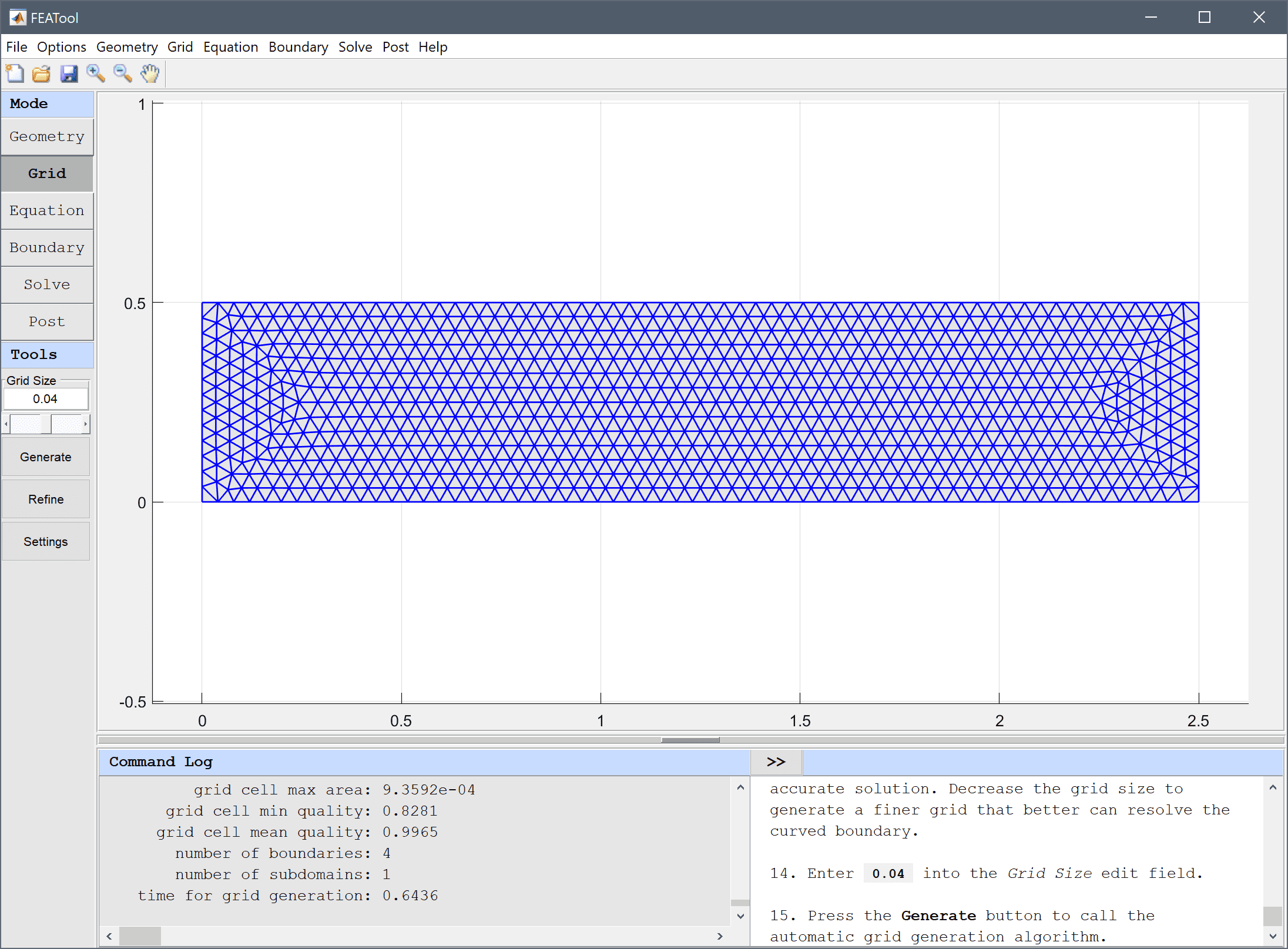
Equation and material coefficients can be specified in Equation/Subdomain mode. In the Equation Settings dialog box that automatically opens, enter 1 for the fluid Density and 0.001 for the Viscosity. The other coefficients can be left to their default values. Press OK to finish the equation and subdomain settings specification. (Note that the Equation Settings dialog box may look different for CFDTool.)
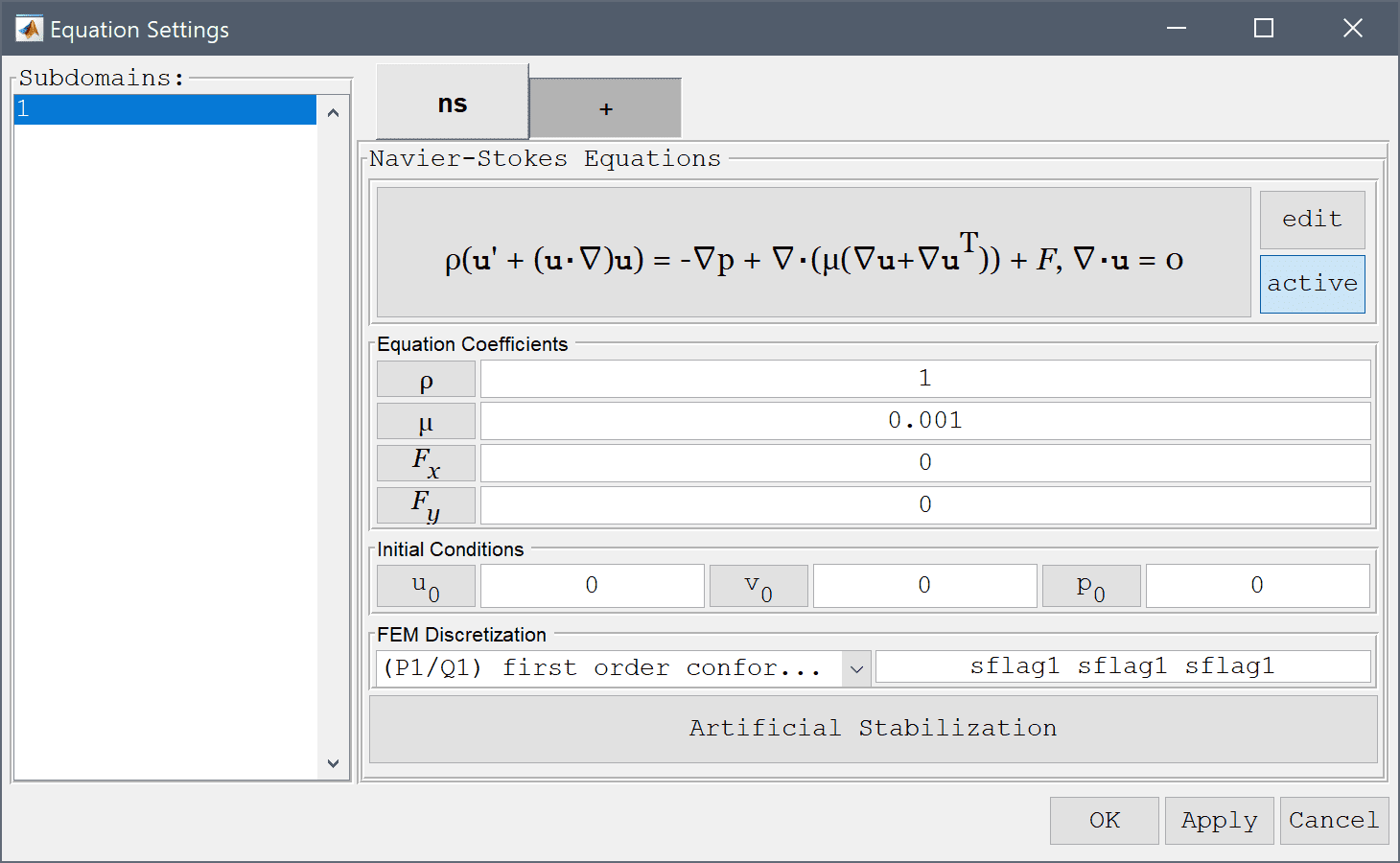
Note that FEATool works with any unit system, and it is up to the user to use consistent units for geometry dimensions, material, equation, and boundary coefficients.
A convenient way to define and store coefficients, variables, and expressions is using the Model Constants and Expressions functionality. The defined expressions can then be used in point, equation, boundary coefficients, as well as postprocessing expressions, and can easily be changed and updated in a single place.
| Name | Expression |
|---|---|
| h | 0.5 |
| l | 2.5 |
| umax | 0.3 |
| uref | 4*umax*(y*(h-y))/h^2 |
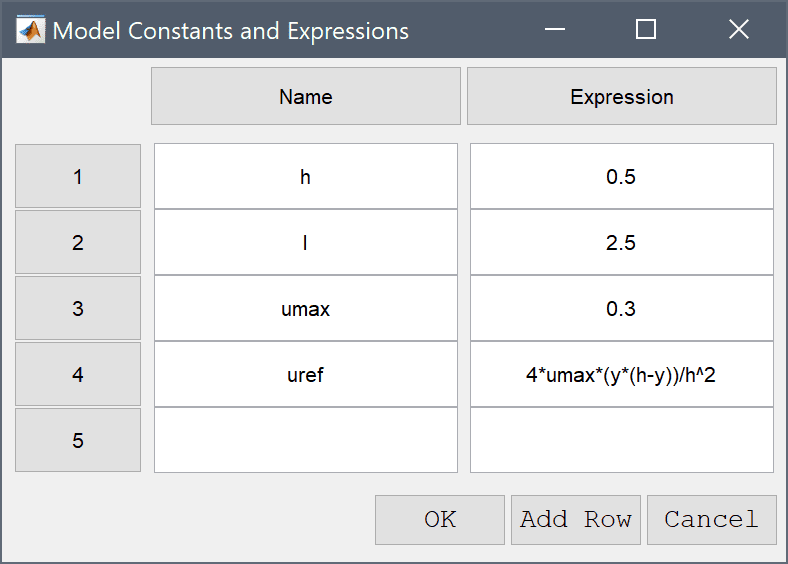
Boundary conditions are defined in Boundary Mode and describes how the model interacts with the external environment.
Enter 2/3*umax into the Velocity in x-direction edit field.
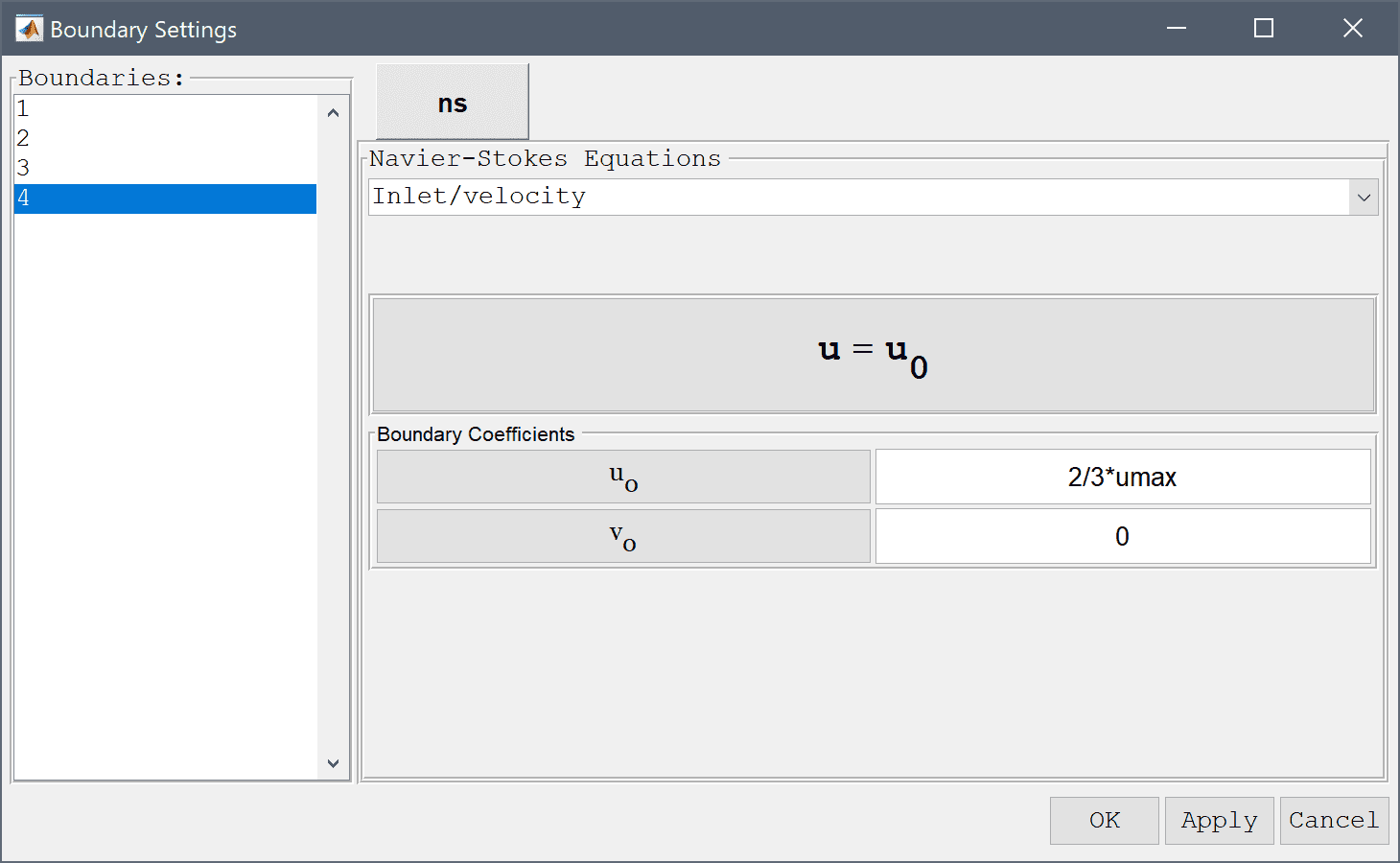
After the problem has been solved FEATool will automatically switch to postprocessing mode and here display the magnitude of the computed velocity field. One can clearly see that the maximum velocity is about 0.3 along the center line as is expected. Clicking anywhere in a surface plot also directly evaluates the surface expression at the location.
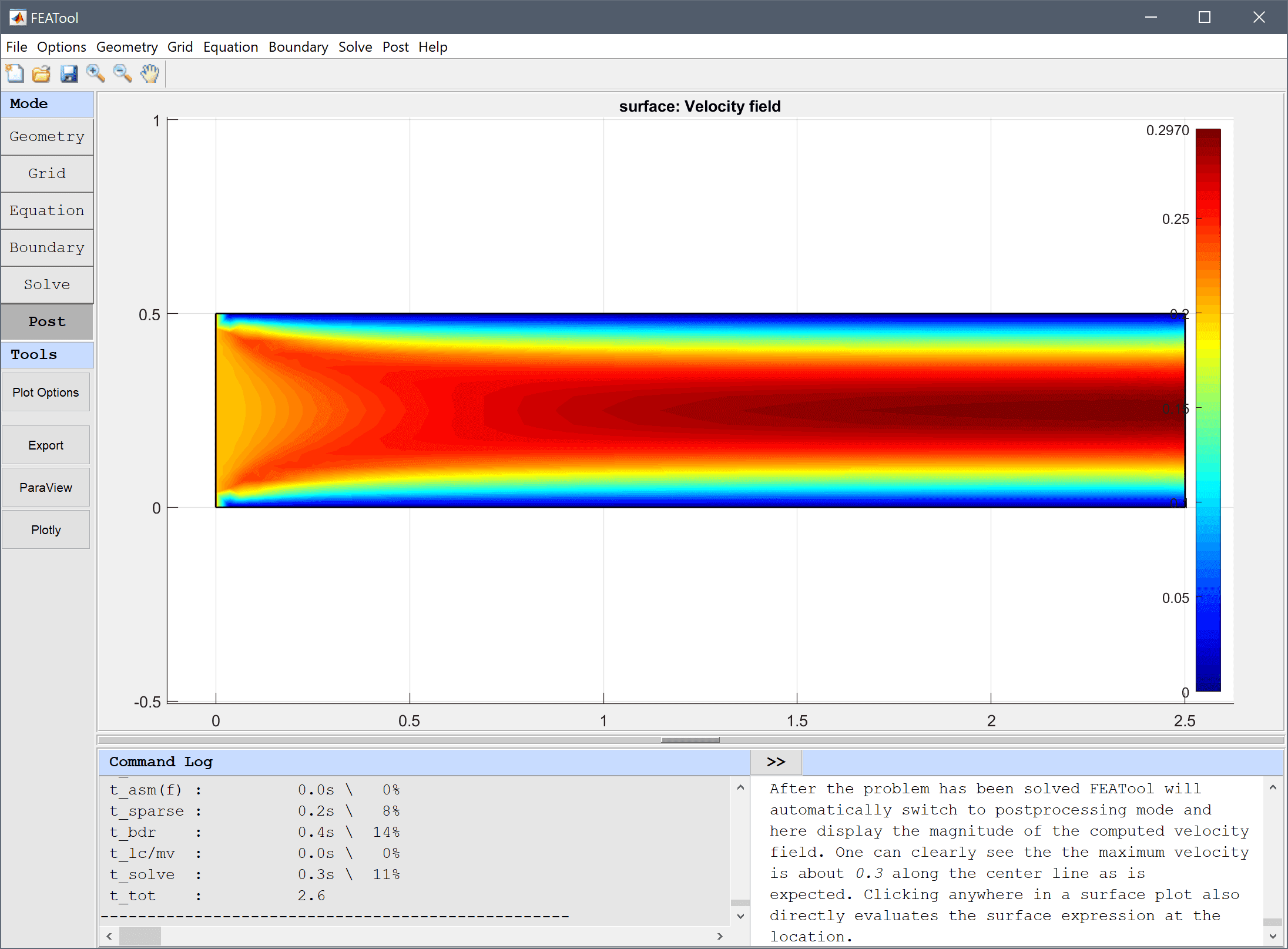
One can also visualize the error between the analytical solution and the computed one. To do this, open the postprocessing settings dialog box by clicking on the Plot Options Toolbar button, and enter the expression abs(sqrt((uref)^2)-sqrt(u^2+v^2))*(x>3/4*l) in the Surface Plot expression edit field. Press OK or Apply.
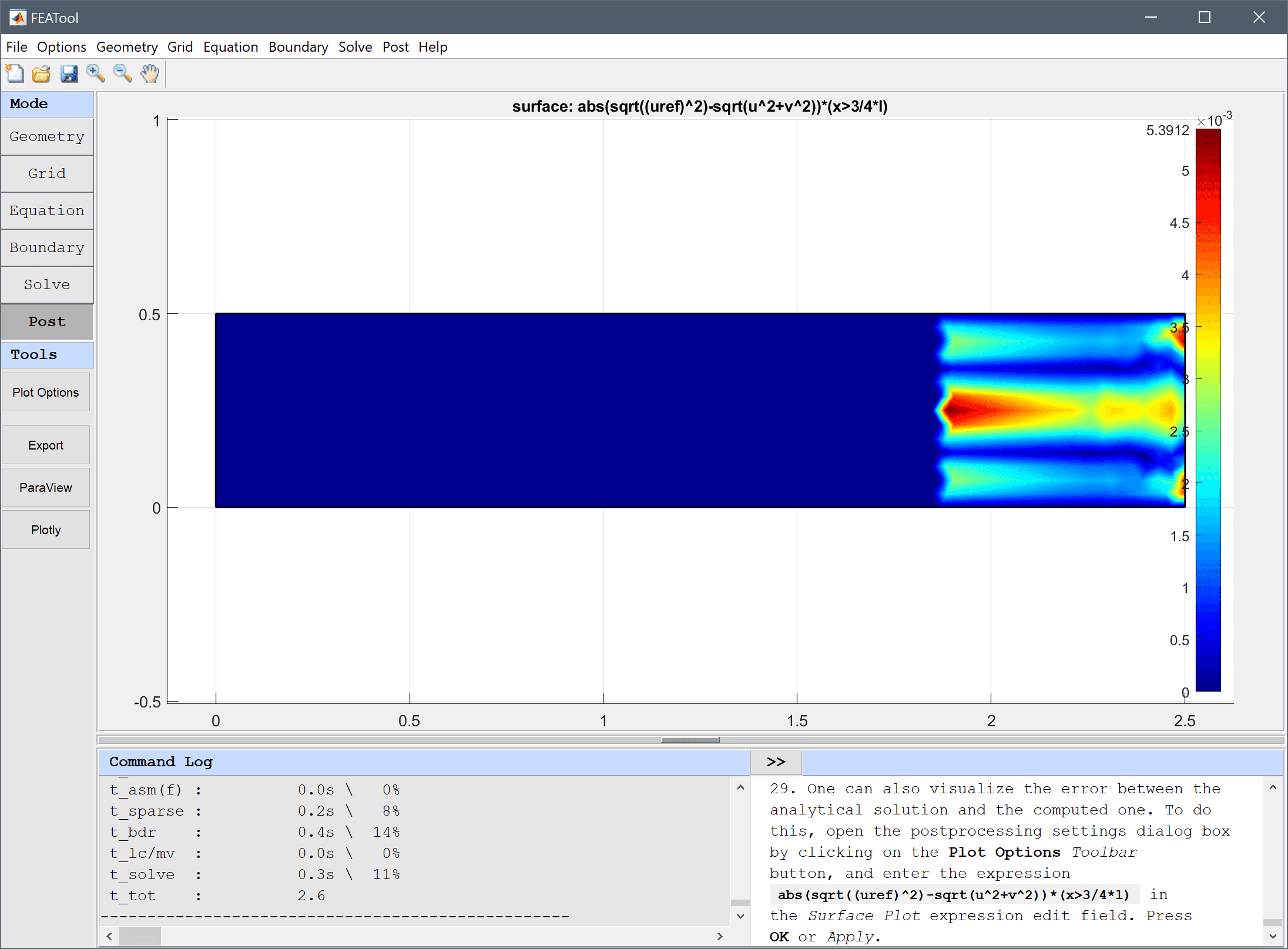
The visualization shows the error towards the outlet, and has an acceptable magnitude around 5·10-3.
The laminar channel flow fluid dynamics model has now been completed and can be saved as a binary (.fea) model file, or exported as a programmable MATLAB m-script text file (available as the example ex_navierstokes1 script file), or GUI script (.fes) file.